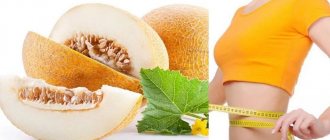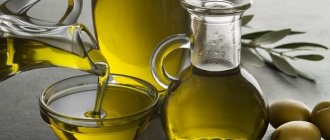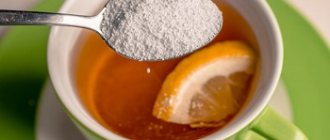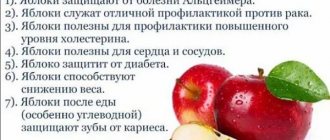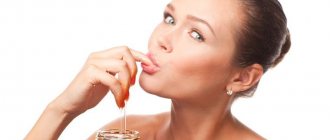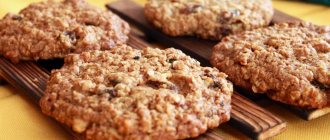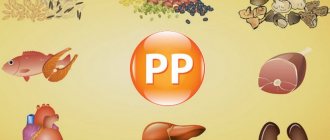History of bananas
Banana is the oldest cultivated crop in the world. The birthplace of the fruit is considered to be the Malay Archipelago, which includes the countries of Indonesia, Malaysia, Brunei, the Philippines and East Timor. Much evidence has been found that local people have been growing bananas for thousands of years.
- The fruit is mentioned in the Indian religious hymns of the Rig Veda (XVII – XI centuries BC) and in the ancient epics Ramayana and Mahabharata. They say that members of the royal family wore clothes made from fibers of banana leaves.
- The ancient Greek philosopher Theophrastus wrote the first book on botany in the 4th century BC, where he made a detailed description of the banana.
- The Chinese writer Yang Fu, who lived in 502-577 AD, in his “Encyclopedia of Curiosities” described the growth and cultivation of a seedless fruit similar to a crescent.
- Bananas were first brought to Europe by Alexander the Great during his campaign in India and Asia in 327 BC. Due to the cold climate, the plant did not take root and remained exotic until the end of the 19th century.
In 1870, American sea captain Lorenzo Baker brought 160 bunches of bananas from Jamaica, and a fashion for the fruit began. In 1876, at an exhibition in honor of the 100th anniversary of American independence in Philadelphia, bananas were sold for 10 cents per banana, which was expensive for those times.
Ulcers
Bananas are used as a dietary food for intestinal disorders due to its soft consistency. This is the only raw fruit that can be eaten without irritating the mucous system. It also neutralizes excess acidity and reduces irritation by coating the stomach wall.
Is it true
Bananas contain substances that kill bacteria that cause stomach ulcers and also promote the release of mucus that coats the walls of the stomach. Also, do not forget about its antacid property, which has a positive effect in the fight against ulcers.
Nutritional value and composition of banana
The benefit of bananas lies in their rich composition. Nature has created a fruit that not only satisfies hunger, but also replaces the vitamin and mineral complex from the pharmacy. Below are lists of useful substances in pulp per 100 grams.
Organic matter
- Saturated fatty acids – 0.2 g
- Polyunsaturated fatty acids – 0.2 g
- Organic acids – 0.5 g
- Ash – 1 g
- Water – 74 g
- Starch – 2 g
- Dietary fiber – 2 g
Vitamins
- A (retinol) – 20 mcg
- B1 (thiamine) – 0.05 mg
- B2 (riboflavin) – 0.07 mg
- B4 (choline) – 10 mg
- B5 (pantothenic acid) – 0.4 mg
- B6 (pyridoxine) – 0.5 mg
- B9 (folic acid) – 10 mcg
- C (ascorbic acid) – 10 mg
- E (tocopherol) – 0.5 mg
- K (phylloquinone) – 0.5 mg
- PP (niacin) – 0.7 mg
- Provitamin A (beta carotene) – 0.15 mg
Minerals and trace elements
- Fluoride (F) – 2.2 mcg
- Selenium (Se) – 1 mcg
- Manganese (Mn) – 0.27 mg
- Zinc (Zn) – 0.15 mg
- Iron (Fe) – 0.6 mg
- Phosphorus (P) – 28 mg
- Potassium (K) – 348 mg
- Sodium (Na) – 31 mg
- Magnesium (Mg) – 42 mg
- Calcium (Ca) – 8 mg
A banana weighing 200 grams contains 25% of the daily value of potassium. This trace element is responsible for the functioning of the cardiovascular system, regulates the secretion of the kidneys and liver and stops the development of atherosclerosis. It is also found in mushrooms and greens, but bananas are the most delicious source of useful trace elements.
What is fructose?
Fructose is a monosaccharide (natural sugar) found freely in sweet fruits and some vegetables. Corn syrup, agave syrup, honey, dates, grapes are record holders for its content. The daily requirement of fructose for a healthy person is about 30-40 g. This amount is comparable to 200 g of chocolate, 80 g of honey or five apples.
Alena Stepanova
nutritionist
Insulin is not required to process fructose; it does not control its level in the blood. Therefore, even if you are resistant to insulin, which is typical for diabetes, the monosaccharide is actively involved in fat formation. It can also interfere with weight loss because it inhibits the oxidation of fats inside cells for energy.
Metabolizing fructose produces free radicals, which can increase fat formation in the liver.
In addition, a study by American scientists proves that one of the causes of Alzheimer's disease is increased levels of fructose.
The nutritionist recommends giving preference to berries, since, in addition to fructose, they also contain antioxidants. It is also worth paying attention to sour fruits - you can eat 1-2 of them per day.
What can the calorie content of seasonal fruits be compared to?
You can't lose weight that way. Why can't you eat too much fruit?
Calorie content of bananas
The authors of most weight loss diets limit fruit in the diet due to its high calorie content.
- 100 grams of bananas contain:
- Calories – 95 kcal
- Proteins – 1.5 g
- Fats – 0.2 g
- Carbohydrates – 22 g
Fact!
The calorie content of dried banana is 370 kcal per 100 grams.
Glycemic index of bananas
The glycemic index of a banana depends on its ripeness - the riper the fruit, the higher the index:
- 35 units – slightly green;
- 50 units – ripe;
- 65 units – fruit with dark spots and dots.
If you care about your figure, choose slightly underripe and not very sweet bananas as a snack. They are no less healthy than the bright yellow and fragrant ones, but contain less sugar and have a safe glycemic index.
How much sugar is in a banana
It is generally accepted that a banana contains a lot of starch, but this is not so - this fruit contains 7 times less starch than any potato variety. To calculate how much sugar is in a banana, you need to understand how starch becomes glucose.
Starch is a polysaccharide molecule made up of many glucose units and is the net energy reserve found in plants. During the digestion process, the pulp breaks down into pure sugar and dietary fiber.
On a note!
100 grams of banana contains 2 grams of starch, which turns into 12 grams of sugar. For comparison, a heaping tablespoon contains 25 grams of sugar.
Bananas contain blood sugar-raising carbohydrates
If you have diabetes, the amount and type of carbohydrates present in your diet is important to know.
This is because carbohydrates raise blood sugar levels more than other nutrients, which means they can have a big impact on your blood sugar levels.
When blood sugar levels rise in people without diabetes, the body produces insulin. It helps move sugar from the blood into cells where it is used or stored.
However, this process does not work properly in people with diabetes. Their bodies do not produce enough insulin, or their cells become resistant to the insulin they produce.
If not managed properly, high carbohydrate foods can cause spikes in blood sugar levels or persistently high blood sugar levels, which is unhealthy.
How much sugar is in a banana?
One medium banana (about 126 grams) contains 29 grams of carbohydrates and 112 calories. Carbohydrates are presented in the form of sugar, starch and fiber ().
One medium-sized banana contains about 15 grams of sugar ().
Conclusion:
Bananas do contain simple carbohydrates, which can raise your blood sugar levels more than other nutrients.
Types of bananas
More than 500 varieties of bananas are cultivated in the world, most of them are not distributed outside the countries where they are grown. In our country, this is a sweet fruit that replaces dessert, and on an industrial scale, bananas are divided into several types.
- Ornamental - the plant is used to create a beautiful landscape; the flowers do not bear fruit and serve as decoration for yards.
- Technical - the fruit pulp is processed, cleaned and a mass of fiber is obtained. They are used to make threads, which become the basis for fabric production.
- Feed bananas contain a large amount of starch; their pulp is peeled, dried, ground into flour and used for baking.
- Fruits - these are the fruits we buy for food and use in desserts.
On a note!
Banana flour is gluten-free and rich in protein and fiber.
Types of bananas
Banana: vitamin and mineral content
One medium banana covers 25-30% of the daily requirement for vitamin B6, important for metabolism, 12-15% of the daily requirement for vitamin C, 16% of the daily requirement for manganese, 12% for potassium and 8% for magnesium.
Depending on where they grow, bananas may contain some iron, copper and selenium. Bananas also contain antioxidants catechins and natural dopamine. Even though the dopamine from bananas cannot reach the brain (it is a myth that bananas improve your mood and fight depression), these natural substances successfully fight free radicals.
Banana varieties
Most of us buy one type of banana, but large supermarkets sell several types. On your next trip to the store, pay attention to the selection and try different fruits.
Cavendish
A variety of bananas that is sold in every store. Fruits up to 25 centimeters long are picked unripe. To ensure ripeness, they are treated with a special gas, as a result they become yellow with green spots at the stalk. The most delicious ones are those with black dots, this is a sign of standard ripeness.
Baby
Small fruits 7-10 centimeters long are sold in clusters of 5-7 pieces. In composition they are not inferior to large ones, have a very thin peel and a delicious aroma. Their taste is much sweeter than regular bananas, and the flesh has a creamy texture.
On a note!
Baby bananas are 3 times more expensive than regular bananas.
Barro
Be sure to buy bananas of this variety to try. They are easily distinguished by the square shape of the fruit in cross-section. The color of the peel is yellow, the pulp has a fresh taste and aroma with notes of citrus. Banana chips and candied fruits, beloved by many, are made from the fruits of this variety.
Morado
Philippine bananas are easily identified by their red skin. They are picked unripe, but during transportation the fruits ripen completely. The pulp is very tender, creamy, sweet with a subtle tomato aroma.
Ice Cream
Large fruits 20-22 centimeters long when unripe have a bluish-silver skin. When bananas are fully ripe, the color turns light yellow. The pulp has an unusual taste - white, sweet, similar to ice cream.
Platano
Bananas do not contain fructose and are rich in starch; they are not eaten raw and are used to make soups and side dishes, like potatoes. The ripe fruit has a brown peel and pink flesh of a dense consistency.
Platano
When not to eat bananas
Regardless of how many calories are in a particular type of banana, in some cases you should not eat it at all:
- It is a sweet fruit and contains a large amount of sugar, so it should not be consumed by people suffering from diabetes.
- Overweight people are advised to exclude this product from their diet.
- Stale, poor quality and spoiled fruits can harm the liver.
- Bananas take a long time to digest, so you can eat them in small quantities.
- They are contraindicated for people with varicose veins and thrombophlebitis.
- The fruit thickens the blood, increasing the risk of thrombosis.
A banana does not contain many calories, so why do many people gain weight and gain weight by eating such a dietary fruit? It's all about the carbohydrates. When planning a diet, you need to take into account the carbohydrate base of the banana and adjust the rest of the diet so that the balance of proteins - fats - carbohydrates is not disturbed.
If you devote the bulk of your diet to banana dishes, then the rest of your diet should consist mainly of protein.
In this case, the fat component of the menu is given third place. For the diet to be effective, you need to organize your meals in accordance with, and also calculate how much protein, fat and carbohydrates should be on your plate every day.
Speaking about the caloric content of bananas, it is important to mention that despite the fairly high carbohydrate content in them, bananas have an average (30 units for a green fruit and 50-60 for a regular ripe one) - in other words, banana calories are absorbed by the body gradually, causing prolonged saturation. On average, one banana contains approximately 100-120 kcal.
As for the health benefits of bananas, they contain B vitamins (for example, one banana covers 27% of the daily value in vitamin B6), as well as natural antioxidants and a number of microminerals. However, the main benefit of bananas is that they can successfully act as a source of “correct” carbohydrates after strength training or as a snack.
Calorie content of different types of bananas
The actual calorie and carbohydrate content of bananas depends primarily on the variety and size of the particular fruit - small tropical bananas contain more sugars and calories per 100g than large and much less sweet industrial bananas. In addition, there are low-calorie varieties of green bananas intended for frying and cooking.
Calories in bananas
:
- A very small banana (less than 15 cm, 80 g) - 70 kilocalories.
- Small banana (15-18 cm, 100 g) - 90 kilocalories.
- A medium banana (18-20 cm, 120 g) - 105 kilocalories.
- Large banana (20-23 cm, 135 g) - 120 kcal.
- Very large banana (more than 23 cm, 150 g) - 135 kcal.
- Sliced bananas (1 cup, 150 g) - 135 kcal.
- Banana puree (1 cup, 225 g) - 200 kcal.
Among other things, the calorie content of bananas is also affected by what they are consumed with. For example, a fruit salad of bananas, oranges, apples and sweet yogurt will contain significantly more calories than a single banana. Also, such a fruit salad will contain a fairly large amount (that is, sugars).
Growing banana
Since childhood, we are accustomed to thinking that banana grows on palm trees, but in fact it is a grass. The peculiarity of the plant is its size; the “blade of grass” grows up to 7-10 meters in height and has a thick trunk.
After the first year of growth, the trunk has 40-50 stems, on which white, pink or purple flowers bloom with nectar that attracts bees. Inflorescences grow in clusters according to gender characteristics - female, male and neuter separately.
When flowering ends, bunches of bananas are tied at the base. One pollinated flower produces 250-300 fruits! They are collected, hand-packed into boxes, labeled with the company name, and shipped all over the world. Bananas from Ecuador, China and India are especially popular in Ukraine.
How to grow a banana
If you plant a banana in open ground, in our climate the perennial herbaceous plant will freeze when the air temperature drops to 16°C. If you have a greenhouse or heated loggia, try growing bananas at home.
Growing Tips:
- choose seedlings of dwarf varieties: Musa Super Cavendish Dwarf or Musa Cavendish Dwarf, which grow no higher than 2 meters;
- Place the tub with a banana in the most illuminated place;
- regularly water the leaves and spray them with a spray bottle, the plant loves high air humidity;
- Apply fertilizer to the soil every 2 weeks and replant when roots emerge from the drainage holes.
On a note!
When the root system reaches a pot volume of 50 liters, the banana will begin to bear fruit.
Are bananas dietary?
We also note that due to the high content of fast carbohydrates, bananas are still not suitable for those who adhere to or - an average banana will be equated to a figure of 30-40% of the permissible daily sugars. Unfortunately, such diets actually prohibit the consumption of fruit, which is one of the main disadvantages of carbohydrate-free diets for health.
Harm of bananas
Speaking about the dangers of bananas, we must first of all note that their consumption is not recommended for people with irritable bowel syndrome, as they can aggravate the disease (2). However, according to Harvard Health Publications
, in some even healthy people, bananas can cause food allergies and.
In addition, in quite rare cases, regular consumption of bananas can increase blood viscosity, which, in turn, can reduce blood flow to certain parts of the body. This is primarily dangerous for people suffering from varicose veins, and can also negatively affect male potency (especially for older men).
***
The undeniable advantages of bananas include a high carbohydrate content, useful for closing the carbohydrate window after strength training for muscle growth, a relatively low glycemic index, as well as the presence of microminerals and antioxidants. The main disadvantages are the calorie content if consumed in excess. However, bananas definitely cannot be considered harmful to human health.
Scientific sources:
- Bananas, raw,
- Understanding and treating an irritable bowel,
- What's on my food: Bananas,
- Global Issues For Breakfast: The Banana Industry And Its Problems,
As we interact with people in our increasingly frantic and fast-paced lives, we often lose control of our consumption of needed and unnecessary foods. Sugar is vital to good health, without it all the cells in our body will stop functioning and die. However, eating too much sugar per day increases the risk of a number of diseases, including rotten teeth, obesity and type 2 diabetes.
These days, we are increasingly being warned to reduce our sugar intake. But often people don't even realize how much sugar may be in the foods they eat.
To help these people, we'll list some everyday foods and drinks along with the amount of sugar (in teaspoons) they contain.
Beneficial properties of bananas
Much has been written about the benefits and harms of bananas; most nutritionists and doctors advise consuming the fruit in moderation. The fruits are rich in vitamins and microelements, fiber and satisfy hunger well. This is a natural dessert with virtually no sugar, healthy for children and adults.
General benefit
- The tropical fruit is rich in potassium, which supports eye, kidney, liver and cardiovascular health. Eat 1-2 bananas daily to reduce the risk of atherosclerosis by 50%.
- Banana is rich in carbohydrates, which instantly saturate the brain with energy and activate its work. If you have a difficult exam ahead and need to concentrate and gain strength, eat a ripe banana.
- Scientists have found that the optimal combination of potassium and magnesium in the fruit pulp helps lower blood pressure and prevents the formation of stones in the kidneys and gall bladder.
- Magnesium in combination with vitamins C and B6 has a positive effect on the functioning of the heart muscle and reduces the risk of heart attack and other heart diseases by 2 times.
- Banana pulp is rich in fiber; it is recommended to eat the fruit for diarrhea and other disorders of the gastrointestinal tract. During a disorder in the gastrointestinal tract, potassium is washed out of the body, and the fruit restores the level of the microelement.
- Ripe fruits contain the maximum amount of insoluble dietary fiber, which, like a brush, cleanses the intestines of accumulated free radicals and prevents the development of colorectal cancer.
- Banana berries are rich in antacids. The substances neutralize bacteria that irritate the mucous membrane and prevent the occurrence of gastritis and stomach ulcers.
For men
- Bananas are recommended for all lovers of an active lifestyle. The pulp contains substances that relieve muscle tension and relieve soreness after exercise.
- High in carbohydrates and calories, you'll feel instantly energized after the gym. It is recommended to prepare protein shakes from cottage cheese and milk based on the fruit.
For women
- The sweet pulp contains amino acids that promote the production of dopamine, which improves mood. During PMS, it is recommended to eat 1 banana a day to avoid mood swings.
- A nursing mother's diet is often limited. When you can't eat most fruits, bananas come to the rescue. The fruits do not contain allergens and are recommended during lactation.
For children
- Bananas are the very first complementary food after breast milk. The fruit does not cause allergies, provides the baby’s body with useful substances and especially fiber, which normalizes stool. Scientists have found that children who eat 1 banana daily suffer from asthma 2 times less often.
- It is important to give cottage cheese to children from an early age for bone formation. The carbohydrates in bananas promote the absorption of calcium from dairy and fermented milk products. Children do not need to be forced to eat bananas; the sweet fruit is a favorite dessert.
Fact!
Banana is the only product in the world that contains natural serotonin - the “happiness hormone”.
Can you eat bananas if you have diabetes?
According to the American Diabetes Association, people with diabetes can eat almost any fruit, including bananas. Additionally, the Dietary Guidelines for Americans encourage consumption of at least 5 servings of fruits and vegetables daily.
Important! The American National Institute of Diabetes and Digestive and Kidney Diseases lists bananas as a safe food for people with diabetes. Ideally, diabetics should eat fruit evenly throughout the day to avoid sudden spikes in blood sugar levels.
. In addition to this, you should remember that fruits contain carbohydrates, so these carbohydrates also need to be counted in your diet
If I, for example, eat a lot of bananas, then I have to include the carbohydrates from those bananas in my daily diet.
In addition to this, you should remember that fruits contain carbohydrates, so these carbohydrates also need to be counted in your diet. If I, for example, eat a lot of bananas, then I have to include the carbohydrates from those bananas in my daily diet.
What to remember about carbohydrates
If you have diabetes, you need to be very careful about the amount and type of carbohydrates you consume. With the help of the hormone insulin, carbohydrates are broken down in your body and converted into glucose, which gives energy to the body and nourishes cells. Diabetes causes problems with insulin, which leads to increased levels of glucose circulating in the body.
If a person eats too much food containing carbohydrates (and almost all fruits contain quite a lot of carbohydrates), then he can exceed the acceptable level of glucose in the blood. At the same time, we need carbohydrates; we cannot live completely without them. But if you have diabetes, you need to learn how to handle them correctly.
What's healthy about bananas?
It is not surprising that people usually eat more bananas than other fruits - they are quite affordable, tasty and healthy. Substances in banana include high fiber content, vitamin B6, C, potassium; Bananas are also rich in fiber, which helps you maintain a feeling of fullness after eating for a long time.
Vitamin B6 improves mood, and vitamin C stimulates the immune system; calcium helps normalize blood pressure. Bananas are quite safe for diabetes. However, you need to consider how ripe the banana is. In October 1992, an interesting study was published in Diabetic Medicine.
What it found was that people who consumed overripe bananas had a fairly high glycemic response (GI), which meant that their blood sugar levels increased, leading to an increase in insulin use. Those who ate bananas that were not yet fully ripe had a lower glycemic index.
Of course, neither overripe nor underripe bananas raised blood sugar levels as much as regular white ones. Scientists have claimed that 90% of the carbohydrates in unripe bananas come from starch, but when the banana ripens, the carbohydrates mostly become free sugars.
Attention! Therefore, scientists advise that bananas, especially unripe ones, may be an acceptable alternative for snacking between meals for people with type 2 diabetes. Avoid eating bananas that are part of desserts such as ice cream or those that have been prepared along with sweet syrups or even just sugared bananas. Such desserts create an excess of carbohydrates, calories and fats
Such desserts create an excess of carbohydrates, calories and fat.
But you can safely enjoy fresh, frozen, canned or dried bananas. This variety will expand your dietary range, give you a greater sense of dietary freedom, and reduce the feeling of being constrained.
Harm of bananas
The high calorie content of bananas is the main contraindication for eating sweet fruits. Nutritionists recommend limiting fruit in your diet if your doctor has prescribed a low-carbohydrate diet. If you are obese, it is better to exclude bananas, making up for the lack of potassium with pharmaceutical complexes.
Contraindications
- Banana removes fluid from the body, causing the blood to thicken and the flow to the organs to decrease. People with varicose veins, men with potency problems and patients with thrombophlebitis are advised to limit fruit in their diet.
- Taking beta blockers in the treatment of cardiac diseases increases potassium levels in the body. You should not eat more than 1 banana per day, especially if you have diseases of the kidneys and genitourinary system.
- If you have irritable bowel syndrome, you must exclude fruits from your diet to avoid bloating.
- People with diabetes should choose unripe fruits with a low glycemic index or avoid bananas due to the complex carbohydrates they contain, which are converted into glucose.
Contraindications
Bananas contain fiber, which can lower blood sugar levels
In addition to starch and sugar, a medium-sized banana contains 3 grams of fiber, or dietary fiber ().
Everyone, including people with diabetes, should eat enough dietary fiber due to its potential health benefits.
However, fiber is especially important for people with diabetes because it can help slow the digestion and absorption of carbohydrates ().
It can reduce spikes in blood sugar levels and improve overall blood sugar regulation ().
One way to determine how a carbohydrate-containing food affects your blood sugar is to look at its glycemic index (GI).
The glycemic index ranks foods based on how much and how quickly they raise your blood sugar.
Scores range from 0 to 100 with the following classifications:
- Low GI : 55 or less.
- Average GI : 56 to 69
- High GI : from 70 to 100
Diets based on low GI foods are thought to be particularly good for people with type 2 diabetes (, , , ).
This is because low GI foods are digested more slowly and cause a more gradual rise in blood sugar.
In general, bananas score low to medium on the GI scale (42 to 62, depending on ripeness) ().
Conclusion:
In addition to sugar and starch, bananas contain fiber. This means the sugar in bananas is digested and absorbed more slowly, which can prevent spikes in blood sugar levels.
How to select and store bananas
Bananas are collected unripe and transported at a temperature not exceeding 10°C so that they do not ripen on the road. That is why they are most often sold green in stores.
- If you want to eat bananas in 1-2 days, choose yellow fruits with black dots.
- To bring the fruit to ripeness, place it in a bag with apples, tie it and leave it overnight at room temperature. The ethylene released by fruits will make both apples and bananas ripen faster.
- Choose bananas with yellow skin without green spots on the stem; such fruits are sweeter and more aromatic.
- Do not store bananas in the refrigerator; at low temperatures, the peel will quickly turn black, but this will not affect the taste.
Advice!
When choosing bananas for baking or desserts, buy overripe fruits with small black spots, the sweetest ones with a soft center and a pronounced aroma. They are often sold at a 50% discount.
Sugar content in banana
From the place of growth, green bananas are transported to the place of sale in refrigerators cooled to a temperature of 10-13 °C.
Before entering the store, bananas are first “returned to life” in special gas installations, and then begin to ripen at normal temperatures. This accelerated process causes the fiber and starch contained in the banana to gradually turn into sugar and other simple carbohydrates with a high glycemic index. It is important to remember that the more ripe you eat a banana, the more sugar it contains.
Use in cooking
We advise you to look in supermarkets for plantains rather than ordinary bananas. This is a vegetable variety that is used in many countries as our potatoes. The fruits are peeled, then boiled, stewed with meat, made into dough and prepared into a delicious dish - fried banana.
- In Polynesia, a popular dish is masi - canned plantains and breadfruit.
- In Venezuela, they prepare yo-yo - feed bananas are fried with soft sheep cheese.
- In India, boiled banana flowers are used in traditional curry paste.
- In Latin America, unsweetened chips are made from plantains.
- All over the world, bananas are added to smoothies, fruit salads and baking fillings.
- Frozen banana pulp is natural ice cream.
- Microwave bananas topped with banana topping - the easiest dessert in 3 minutes.
Advice!
For vegans and those fasting, it is recommended to replace eggs in baked goods with bananas. 1 medium-sized fruit = 1 chicken egg. Peel the fruit, mash thoroughly with a fork and use as indicated in the recipe.
Fructose content in fruits and vegetables
Table of the percentage of fructose in products from the category - fruits and vegetables.
| Product | Content |
| Dates Majul | 31.95 g |
| Dates Deglet nur | 19.56 g |
| Dried apricots | 12.47 g |
| Fresh jackfruit | 9.19 g |
| Grapes (red or green) fresh | 8.13 g |
| Fresh black persimmon (sapota) | 7.66 g |
| Fresh pear | 6.42 g |
| Cherimoya fresh | 6.28 g |
| Fresh apples | 5.90 g |
| Fresh blueberries | 4.97 g |
| Fresh bananas | 4.85 g |
| Mango fresh | 4.68 g |
| Fresh kiwi | 4.35 g |
| Fresh grapes (muscat varieties) | 3.92 g |
| Fresh papaya | 3.73 g |
| Fresh red or white currants | 3.53 g |
| Fresh cherries | 3.51 g |
| Fresh watermelon | 3.36 g |
| Fresh plum | 3.07 g |
| Fresh melon | 2.96 g |
| Feijoa fresh | 2.95 g |
| Fresh strawberries | 2.44 g |
| Fresh blackberries | 2.40 g |
| Fresh tangerines | 2.40 g |
| Fresh raspberries | 2.35 g |
| Fresh red bell pepper | 2.26 g |
| Fresh pineapple | 2.12 g |
| Fresh green onion | 2.12 g |
| Raw corn | 1.94 g |
| Fresh cantaloupe melon | 1.87 g |
| Ginger extract powder | 1.78 g |
| Fresh grapefruit | 1.77 g |
| Fresh clementine | 1.64 g |
| Raw rutabaga | 1.61 g |
| Fresh peach, pitted | 1.53 g |
| Fresh red cabbage | 1.48 g |
| Fresh cabbage, white cabbage | 1.45 g |
| Boiled onions | 1.44 g |
| Fresh tomatoes | 1.37 g |
| Cooked tomatoes | 1.31 g |
| Fresh onions | 1.29 g |
| Boiled cabbage (white cabbage) | 1.16 g |
| Green bell pepper, fresh | 1.12 g |
| Naranjilla frozen | 1.04 g |
| Fresh iceberg lettuce | 1.00 g |
| Raw asparagus | 1.00 g |
| Fresh cauliflower | 0.97 g |
| Fresh apricot | 0.94 g |
| Fresh Brussels sprouts | 0.93 g |
| Fresh cucumbers | 0.87 g |
| Fresh Roman salad | 0.80 g |
| Boiled corn | 0.79 g |
| Boiled asparagus | 0.79 g |
| Boiled broccoli | 0.74 g |
| Fresh radish | 0.71 g |
| Raw sweet potato | 0.70 g |
| Fresh broccoli | 0.68 g |
| Fresh cranberries | 0.67 g |
| Raw okra | 0.57 g |
| Carrots raw (fresh) | 0.55 g |
| Fresh head lettuce | 0.51 g |
| Fresh lettuce | 0.43 g |
| Fresh green peas | 0.39 g |
| Fresh celery | 0.37 g |
| Boiled carrots | 0.36 g |
| Fresh turnip tops | 0.29 g |
| Boiled potatoes | 0.28 g |
| Fresh red lettuce | 0.28 g |
| Raw potatoes | 0.26 g |
| Mashed potatoes with milk and butter, prepared | 0.24 g |
| Broccoli raab cooked | 0.24 g |
| Canned corn | 0.18 g |
| Fresh broccoli raab | 0.17 g |
| Fresh spinach | 0.15 g |
| Canned green peas | 0.13 g |
| Avocado fresh | 0.12 g |
| Edamame cooked | 0.12 g |
| Fresh sprouted alfalfa seeds | 0.12 g |
| Boiled artichokes | 0.02 g |
| Boiled variegated beans (Pinto) | 0.00 g |
| French fries | 0.00 g |
| Roasted peanuts | 0.00 g |
| Soy sauce (hydrolyzed) | 0.00 g |
| Boiled white beans | 0.00 g |
| Red beans (Kidney) sprouted fresh | n/a |
| Fresh sprouted variegated beans (Pinto) | n/a |
| Boiled pink beans | n/a |
| Boiled black beans | n/a |
| Dried goji berries | n/a |
| Boiled black-eyed beans | n/a |
| Boiled pigeon peas | n/a |
| Peas boiled in water (ripe) | n/a |
| Fennel, raw (fruit or root) | n/a |
| Fresh sprouted peas | n/a |
| Fresh medlar | n/a |
| Physalis fresh | n/a |
| Fresh vegetable physalis | n/a |
| Jujube (Chinese date) fresh | n/a |
| Fresh pomegranate | n/a |
| Dry chickpeas | n/a |
| Boiled chickpeas | n/a |
| Fresh breadfruit | n/a |
| Fresh dandelion leaves | n/a |
| Fresh persimmon | n/a |
| Chicory root, raw | n/a |
| Canned olives | n/a |
| Fresh chicory leaves | n/a |
| Fresh guava | n/a |
| Canned green olives | n/a |
| Chayote raw | n/a |
| Prickly pear (fruit) fresh | n/a |
| Fresh daikon | n/a |
| Fresh jambolan | n/a |
| Fenugreek seeds | n/a |
| Durian fresh | n/a |
| Canned heart of palm | n/a |
| Raw garlic | n/a |
| Lentils boiled in water | n/a |
| Fresh sprouted lentils | n/a |
| Fern (shoots) raw | n/a |
| Parsnip root raw | n/a |
| Cooked squash | n/a |
| Raw beetroot | n/a |
| Fresh mulberries | n/a |
| Seedless raisins | n/a |
| Red hot fresh chili pepper | n/a |
| Raw ginger root | n/a |
| Hot chili peppers dried in the sun | n/a |
| Fresh parsley | n/a |
| Fresh Suriname cherries | n/a |
| Fresh figs | n/a |
| Boiled spinach | n/a |
| Fresh sorrel | n/a |
| Fried or baked zucchini (without oil) | n/a |
| Fresh pomelo | n/a |
| Escarole cooked | n/a |
| Fresh purslane | n/a |
| Java apple fresh | n/a |
| Boiled Brussels sprouts | n/a |
| Yams cooked | n/a |
| Sauerkraut (kimchi) | n/a |
| Raw curly cabbage | n/a |
| Fresh kale | n/a |
| Cooked cabbage (boiled) | n/a |
| Fresh Chinese cabbage | n/a |
| Fresh savoy cabbage | n/a |
| Boiled cauliflower | n/a |
| Radicchio fresh | n/a |
| Rambutan canned | n/a |
| Rhubarb stem raw | n/a |
| Fresh carissa fruits | n/a |
| Turnips raw | n/a |
| Cooked turnips | n/a |
| Baked potatoes | n/a |
| Potato starch | n/a |
| Kiwano fresh | n/a |
| Cilantro (coriander leaves) fresh | n/a |
| Hibiscus flower, fresh | n/a |
| Fresh arugula | n/a |
| Salsify (salf's root) raw | n/a |
| Fresh endive | n/a |
| Sapodilla fruits fresh | n/a |
| Fresh kohlrabi | n/a |
| Boiled kohlrabi (cabbage) | n/a |
| Sugar apple fresh | n/a |
| Fresh beet tops | n/a |
| Raw beets | n/a |
| Boiled beets | n/a |
| Fresh watercress | n/a |
| Fresh gooseberries | n/a |
| Prunes | n/a |
| Fresh Antillean apricot | n/a |
| Fresh soursop | n/a |
| Fresh kumquat | n/a |
| Fresh black currant | n/a |
| Fresh quince | n/a |
| Fresh amaranth leaves | n/a |
| Amaranth grains cooked | n/a |
| Starfruit (starfruit) fresh | n/a |
| Fresh oranges | n/a |
| Peanuts raw | n/a |
| Boiled Spanish artichokes | n/a |
| Cooked eggplant | n/a |
| Boiled bamboo shoots | n/a |
| Fresh lime | n/a |
| Dry soy tofu cheese | n/a |
| Hard tofu cheese (linen) | n/a |
| Raw milkweed shoots | n/a |
| Fermented tofu cheese (fuyu) | n/a |
| Dried bananas | n/a |
| Fresh plantains | n/a |
| Boiled butterbur | n/a |
| Quinoa fresh | n/a |
| Boiled beans (ripe) | n/a |
| Boiled green beans | n/a |
| Fresh green beans | n/a |
| Soybean cake | n/a |
| Fresh lemon, without peel | n/a |
| Soy Protein (Isolate) Powder | n/a |
| Fresh lychees | n/a |
| Soy protein (concentrate) powder | n/a |
| Frozen logan berry | n/a |
| Soy sauce (tamari) | n/a |
| Fresh longan | n/a |
| Boiled soybeans (ripe) | n/a |
| Boiled burdock root | n/a |
| Fresh sprouted soybeans | n/a |
| Fresh tamarind | n/a |
| Taro cooked tubers | n/a |
| Chinese fresh broccoli | n/a |
| Chinese cooked broccoli | n/a |
| Fresh onion | n/a |
| Fresh leek | n/a |
| Jerusalem artichoke raw | n/a |
| Leeks cooked | n/a |
| Fresh shallots | n/a |
| Fresh elderberry | n/a |
| Fresh chives | n/a |
| Lupine (lupine beans) cooked | n/a |
| Fresh pumpkin leaves | n/a |
| Wasabi root raw | n/a |
| Raw pumpkin | n/a |
| Boiled or baked pumpkin | n/a |
| Fresh grape leaves | n/a |
| Fresh chard | n/a |
| Barbados cherry fresh | n/a |
| Fresh passion fruit | n/a |
| Boiled mung bean | n/a |
| Fresh sprouted mung bean | n/a |
| Boiled adzuki beans | n/a |
| Cooked cowpea (boiled) | n/a |
| Boiled green beans (asparagus) | n/a |
| Boiled red beans (Kidney) | n/a |
Application in medicine
Bananas are not used in the pharmaceutical industry, but their beneficial properties are used in folk medicine.
- An infusion of flowers helps with bronchitis and dry cough; it is an excellent expectorant.
- Fresh leaves in many tropical countries are used to treat wounds and abrasions, like our plantain.
- Dried banana roots are added to tea for dysentery and other gastrointestinal disorders.
Medicinal recipes
- For bronchitis, it is recommended to drink a honey-banana drink. Beat the pulp of three fruits in a blender with 500 ml of boiling water, let it brew for 30 minutes. Add 3 tablespoons of honey, drink ½ glass 4 times a day before meals for a week.
- A banana-kefir drink helps with constipation. Beat two ripe bananas with 300 ml of fresh kefir and add 2 tablespoons of oat bran. Drink in the morning on an empty stomach; it is recommended not to eat anything on the day of administration, so that fiber and kefir effectively cleanse the intestinal walls.
- To treat a dry cough, it is recommended to beat the pulp of a ripe banana with 100 ml of freshly squeezed orange juice, add ½ teaspoon of cinnamon and 150 ml of boiling water. Drink three times a day 20 minutes before meals for a week.
Advice!
Don't throw away banana peels! We recommend drying it in the oven, grinding it into powder and adding it to water for flowerpots when watering; this is a natural fertilizer.
Sugar in vegetables
Having understood that natural sugar is necessary for the body to function properly, you need to understand which source is the most valuable for a person. We are, of course, talking about vegetables that contain not only sugar, but also fiber, which ensures the process of its absorption.
In addition to containing a lot of useful elements, vegetables are a valuable supplier of organic sugar. When it enters the body, it turns into glucose, which enters the blood, spreading to all cells. If there is a high concentration of glucose, active production of insulin begins, with the help of which its level in the blood decreases. With constantly elevated glucose levels, the body loses sensitivity to insulin, which poses a threat to human health.
Eating raw vegetables helps avoid such situations. They contain sugar in small quantities, and fiber helps in its proper absorption.
Sugar in processed foods
Vegetables that have undergone any heat treatment do more harm than good. During harmful processing, fiber, which is responsible for the proper absorption of sugar, is destroyed. Without it, glucose is quickly absorbed into the blood, and the produced insulin, trying to neutralize it, turns excess glucose into fat.
Therefore, you need to eat vegetables only fresh and raw, thanks to which not only all the useful elements are absorbed, but also the blood sugar level is controlled. The table below will allow you to see what proportion of sugar in grams is found in the most popular products.
| Product | Sugar content (g per 100 g of product) |
| Spinach | 0,4 |
| Lettuce | 0,5 |
| Artichoke | 0,78 |
| Turnip | 0,8 |
| Cilantro | 0,87 |
| Parsley | 0,9 |
| Garlic | 1 |
| Chinese cabbage | 1,4 |
| Ginger | 1,7 |
| Asparagus | 1,9 |
| Broccoli | 1,7 |
| Arugula | 2 |
| Brussels sprouts | 2,2 |
| Sorrel, green onion | 2,3 |
| Green bean | 2,7 |
| Leek | 3,9 |
| Jerusalem artichoke | 4,2 |
| Swede | 4,5 |
| Green beans | 5 |
| Peas | 5,6 |
| Corn | 6,3 |
| Carrot | 6,4 |
| Beet | 6,8 |
Understanding what composition distinguishes a particular product will help you create a balanced diet, in accordance with personal preferences and maximum health benefits.
However, do not forget that sweet fruits and vegetables should be consumed with caution for those who suffer from fungal skin infections. A high content of natural sugar can aggravate diseases, as it feeds the fungus, provoking its proliferation.
Application in cosmetology
Many cosmetics concerns use banana as a raw material for the production of face, body and hair care products. It is easy to make masks and lotions at home.
Moisturizing mask with banana against acne
Mix ½ ripe banana with 1 tablespoon of unsweetened yogurt or sour cream, add 1 capsule of vitamin E and 1 teaspoon of bran. Mix, apply to face for 20 minutes, rinse with warm water and repeat 2 times a week.
Anti-wrinkle mask with banana peel
Using a spoon, carefully remove the pulp from the banana peel. Carefully break the chicken egg and separate the yolk. Mix in the pulp, stirring thoroughly with a fork. Apply to the neck and skin around the eyes, after 30 minutes, rinse with warm water.
Banana hair rinse
Mix 1 liter of warm water with ripe banana pieces and beat thoroughly with a blender. After shampooing, apply to hair, leave for 5 minutes and rinse.
Advice!
A banana mask helps with sunburn. Place the fruit in the freezer for 20 minutes, cool and beat with a blender or mash thoroughly with a fork. Apply to damaged areas of skin, leave for 30 minutes.
Chemicals in bananas
Industrial bananas produced for the United States may contain the carcinogens thiabendazole and chloramisole, pesticides used to control pests.
However, in Russia and the countries of the European Union the use of such substances in the food industry is strictly prohibited. An important disadvantage of bananas is that the banana industry is responsible for 5% of global carbon dioxide emissions, which is equivalent to the emissions of the entire Russian industry. The main contribution to the destruction of the environment by this gas is made by refrigerators for transporting unripe bananas.
The benefits of bananas include a high carbohydrate content, useful for closing the carbohydrate window after strength training for muscle growth, a low glycemic index, and the presence of trace minerals and antioxidants. The disadvantages are environmental damage and possible harm to the health of some people.
Interesting Facts
- The Gokusen banana variety was developed in the Philippines. It is grown 500 meters above sea level in the mountains and sells for $2 per fruit.
- In China, it is illegal to broadcast scenes of girls eating bananas on television.
- In British slang, “banana” is a nickname for a crazy person.
- In the 16th century, conquistadors considered fruits to be food for the plebeians and fed them to slaves.
- The term "banana equivalent" is used to measure the level of radioactivity. It is equal to the amount of radiation that a person will receive if he eats one fruit. The fruit contains potassium-40 isotopes equivalent to 0.05 microsievert. The lethal dose is 8 sieverts.
- In nature, there are bananas of amazing colors - blue, black and gold.
- For Ecuador, Costa Rica and Guatemala, banana exports are the main source of filling the state treasury.
